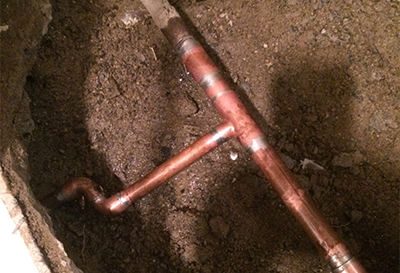6 Ways to Find Concealed Water Leakages in Your House
6 Ways to Find Concealed Water Leakages in Your House
Blog Article
What're your thoughts and feelings on Finding hidden leaks?

Early discovery of leaking water lines can mitigate a prospective catastrophe. Apart from saving you cash, it will certainly decrease the irritation as well as irritation. The minute you find a leakage, calling your plumber for repairs is the best remedy. Some tiny water leaks might not be visible. If you can not find it with your naked eyes, here are some hacks that aid.
1. Check Out the Water Meter
Inspecting it is a surefire way that assists you discover leakages. If it moves, that shows a fast-moving leak. This implies you may have a slow leakage that can even be below ground.
2. Inspect Water Usage
If you detect unexpected modifications, in spite of your intake being the exact same, it suggests that you have leaks in your plumbing system. A sudden spike in your bill indicates a fast-moving leakage.
At the same time, a steady rise every month, despite having the same routines, shows you have a slow-moving leak that's also slowly rising. Call a plumber to completely check your residential or commercial property, especially if you really feel a warm area on your flooring with piping beneath.
3. Do a Food Coloring Test
When it comes to water consumption, 30% comes from commodes. If the color somehow infiltrates your bowl during that time without flushing, there's a leak between the tank and dish.
4. Asses Outside Lines
Don't neglect to inspect your outside water lines as well. Examination faucets by attaching a yard pipe. Ought to water permeate out of the link, you have a loosened rubber gasket. Change this as well as ensure all connections are tight. If you've got a sprinkler system, it will help get it properly checked out as well as preserved annually. One small leakage can throw away lots of water and increase your water bill.
5. Examine and also Evaluate the Situation
Property owners should make it a behavior to check under the sink counters and also even inside cupboards for any type of bad odor or mold growth. These two red flags indicate a leak so punctual focus is called for. Doing routine evaluations, also bi-annually, can save you from a significant issue.
Inspect for discolorations as well as deteriorating as the majority of pipelines and also devices have a life span. If you think leaking water lines in your plumbing system, don't wait for it to rise.
Early detection of dripping water lines can minimize a potential disaster. Some small water leaks might not be visible. Inspecting it is a guaranteed method that helps you discover leakages. One tiny leak can throw away bunches of water and also spike your water costs.
If you suspect dripping water lines in your plumbing system, do not wait for it to escalate.
WARNING SIGNS OF WATER LEAKAGE BEHIND THE WALL
PERSISTENT MUSTY ODORS
As water slowly drips from a leaky pipe inside the wall, flooring and sheetrock stay damp and develop an odor similar to wet cardboard. It generates a musty smell that can help you find hidden leaks.
MOLD IN UNUSUAL AREAS
Mold usually grows in wet areas like kitchens, baths and laundry rooms. If you spot the stuff on walls or baseboards in other rooms of the house, it’s a good indicator of undetected water leaks.
STAINS THAT GROW
When mold thrives around a leaky pipe, it sometimes takes hold on the inside surface of the affected wall. A growing stain on otherwise clean sheetrock is often your sign of a hidden plumbing problem.
PEELING OR BUBBLING WALLPAPER / PAINT
This clue is easy to miss in rooms that don’t get much use. When you see wallpaper separating along seams or paint bubbling or flaking off the wall, blame sheetrock that stays wet because of an undetected leak.
BUCKLED CEILINGS AND STAINED FLOORS
If ceilings or floors in bathrooms, kitchens or laundry areas develop structural problems, don’t rule out constant damp inside the walls. Wet sheetrock can affect adjacent framing, flooring and ceilings.
https://www.servicemasterbyzaba.com/blog/how-to-detect-water-leakage-in-walls/

We were made aware of that report about Locating water leaks through an associate on a different site. Enjoyed our content? Please share it. Let somebody else find it. Thanks a lot for going through it.
Report this page